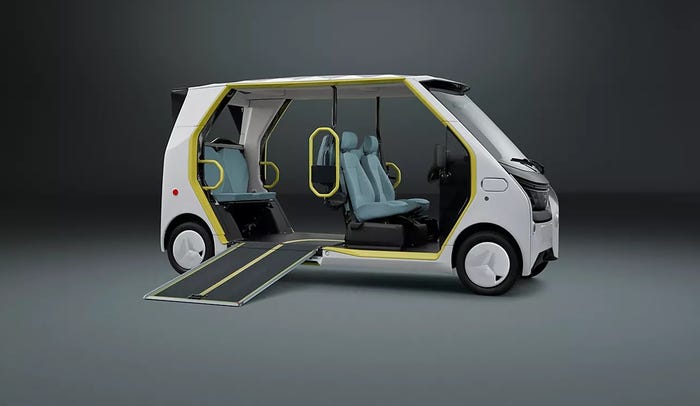All Aboard: New Lincoln Aviator Blasts Off
Output numbers for the hybrid Aviator Grand Touring places it in the company of electrified products from German luxury automaker such as Porsche and BMW.

LOS ANGELES – Quiet is about to take flight at Lincoln aboard an electrified rocket ship.
Ford’s premium brand introduces the ’20 Lincoln Aviator, a 3-row midsize CUV due next summer that in its range-topping Grand Touring guise boasts an electrified twin-turbo 3.0L V-6 plug-in hybrid making a peak 450 hp and 600 lb.-ft. (813 Nm) of torque.
The standard, non-hybrid model still makes a respectable 400 hp and 400 lb.-ft. (542 Nm) of torque. Both engines are mated to a 10-speed automatic transmission, with the plug-in receiving a small electric motor within the gearbox to boost output.
The electric motor draws power from a small, liquid-cooled lithium-ion battery accepting charge from Level 1 and Level 2 chargers.
Rear-wheel-drive motivation is highlighted here on Grand Touring models, although all-wheel-drive will be available.
Lincoln stops short of offering a deep dive into the powertrain specifications, including rated fuel economy, promising them for another day. But Aviator Chief Engineer John Davis hints the hybrid CUV’s all-electric range likely will fall within the ballpark of 30 miles (50 km).
“That would satisfy the Chinese market,” he says, referring to the country’s requirement for certification as a New Energy Vehicle.
Output numbers for the hybrid Aviator, a rebirth of the trend-setting but short-lived midsize SUV it marketed a decade ago to modest sales over a 3-year period, places it in the company of electrified products from German luxury automakers such as Porsche and BMW. Pricing will be released closer to the on-sale date.
For all the head-turning performance of the Aviator, the CUV also steps up the exterior and interior design language that bowed last year on the statement-making Navigator large SUV.
A central element is Quiet Flight, a design philosophy conveying the emotion of effortless flight, incorporating styling cues that nod to aviation heritage and a cabin to sooth an owner after a hectic workday.
Quiet Flight also hints at the brand’s exclusive, boutique-like buying and ownership experience, says Joy Falotico, group vice president and chief marketing officer at Lincoln.
“Aviator is aptly named, because Lincoln is at a take-off point,” she tells journalists here during a sneak peek of the CUV before its public debut.
The Aviator bowed in concept form at the New York auto show seven months ago and combined with the redone Navigator is a 1-2 punch Lincoln arguably has not enjoyed in decades. The two-row Nautilus CUV, a renamed and redone version of the former MKX, occupies the entry point for Lincoln trucks.
Like crosstown rival Cadillac, Lincoln is conducting a brand reboot aimed at taking advantage of Millennials unfazed by its downfall as German luxury names spent years cementing themselves in the U.S. market with older Baby Boomers. Lincoln also wants a piece of the ever-expanding luxury market in China.
 “We want to build a healthy brand,” Falotico says. “Our goal is to have one too few. That is what luxury brands strive for: exclusivity.”
“We want to build a healthy brand,” Falotico says. “Our goal is to have one too few. That is what luxury brands strive for: exclusivity.”
The Aviator joins the largest segment in the U.S. by volume and the third largest in China.
Falotico says the Aviator embodies the Lincoln ownership experience, which she characterizes as a serene, uncluttered and high-tech sanctuary for owners who also enjoy white-glove pick-up and delivery service of their new vehicles.
The Aviator greets its owners with soft lighting and by automatically lowering its ride height for easy ingress. The all-new air suspension in the Aviator can be adjusted by the driver on the fly, and it makes its own split-second adjustments based on readings it takes from the road immediately ahead.
Access to the Aviator is simplified further with the smartphone, where owners can go fob-less if they choose and control door locks, power liftgate, power windows, chirp locator and panic alert from their mobile device. Comfort and entertainment can be adjusted over the phone, too, and up to four phones can be paired. A phone can be securely deactivated, Davis says, and the permissible range for its use is kept tightly around the car.
“We’re confident this is the most secure phone-as-a-key in the industry,” he says. Should the owner’s phone battery die, the Aviator also can be accessed through the traditional Ford keypad within the driver-side window frame.
The Aviator also ushers to market a new suite of driver-assist technologies, including a traffic-jam detection system using adaptive cruise control to automatically adjust speed based on information such as road signs. A steering-assist feature helps avoid collisions with slower or stopped vehicles, but also can intervene when a crash cannot be avoided by braking alone.
Reverse-park assist stops the Aviator automatically if a rear-collision scenario is detected, while the park-assist feature will guide the CUV into a parallel or perpendicular spot without a lick of input from the driver.
 Exterior proportions include a rising rocker panel and tapering roof reducing the greenhouse to suggest the Aviator is gliding through the air. A signature Lincoln grille boldly announces its arrival, while a blue Lincoln badge recalls 12-cyl. models from the past.
Exterior proportions include a rising rocker panel and tapering roof reducing the greenhouse to suggest the Aviator is gliding through the air. A signature Lincoln grille boldly announces its arrival, while a blue Lincoln badge recalls 12-cyl. models from the past.
Inside, a new Black Label theme called “Flight,” combines tan and ebony to convey warmth. Leather seats include an updated massage feature first available on the Navigator. Switchgear recalls early aeronautical executions, while aluminum trim steps in where wood traditionally might decorate the interior as another nod to aviation history.
Lincoln Design Director David Woodhouse says the design cues emulate a Bell & Ross timepiece.
A specially tuned, 28-speaker (or optional 14-speaker) Revel audio system is meant to set a new industry standard with a concert-hall-like experience. Chimes were designed with input from the Detroit Symphony Orchestra, while an available 4G Wi-Fi hotspot and power outlets for each passenger keep Aviator riders connected.
About the Author
You May Also Like



.jpg?width=700&auto=webp&quality=80&disable=upscale)

